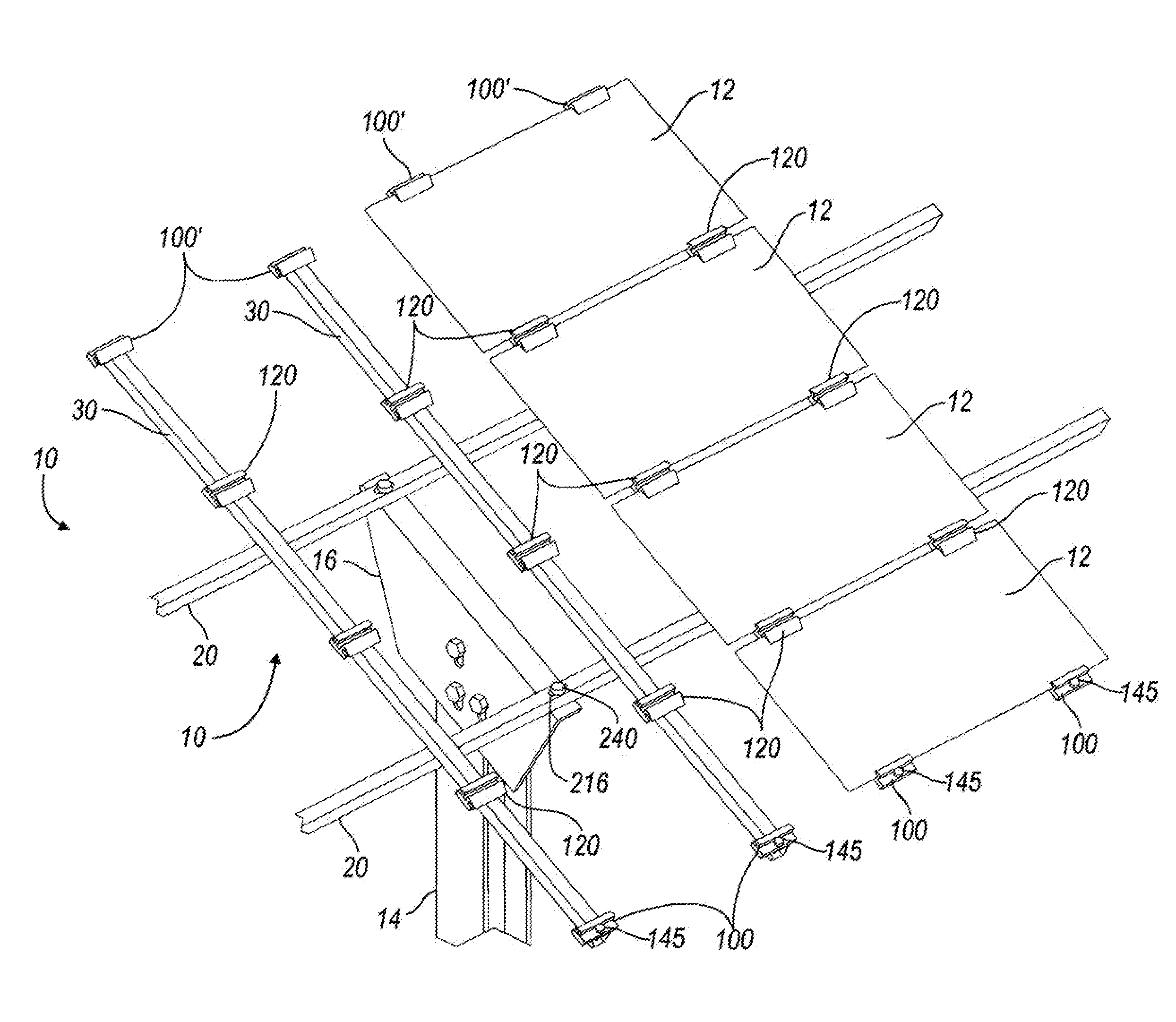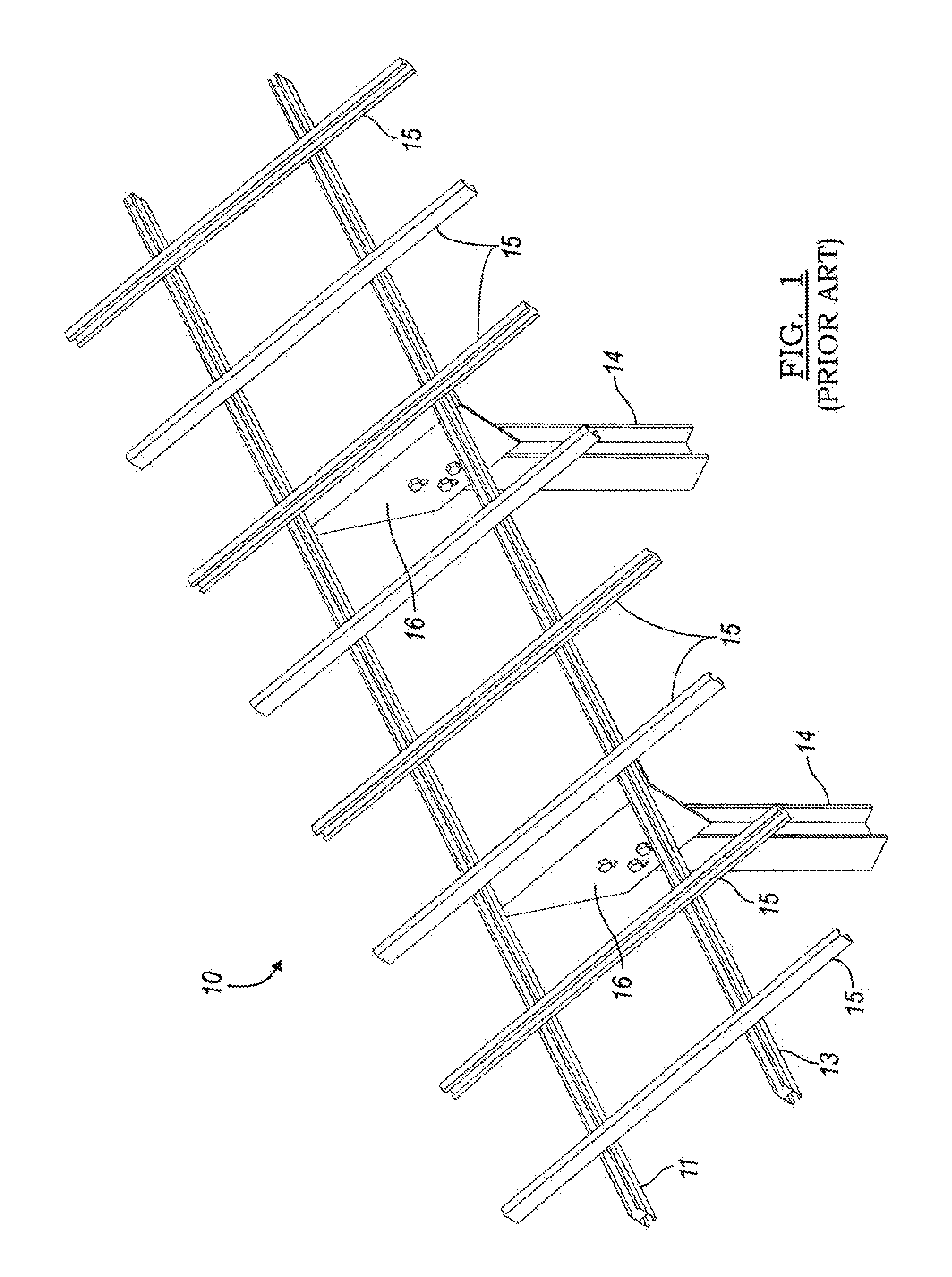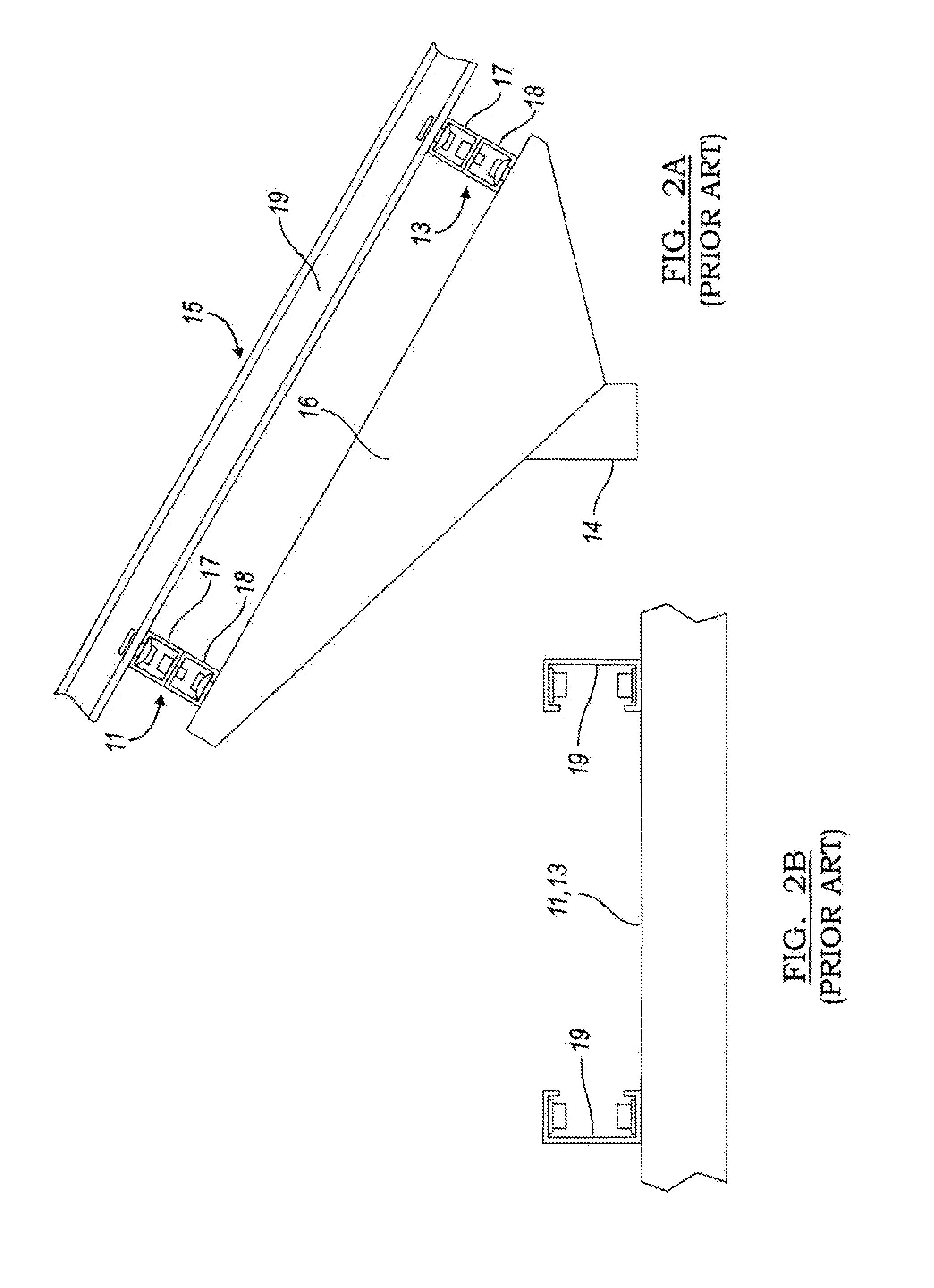Support system for carport with solar panels
a technology for solar panels and support systems, applied in the direction of heat collector mounting/support, manufacturing tools, lighting and heating equipment, etc., can solve the problems of unstable panel mounting, poor structural quality, and difficult placement of solar panels on the support structure, and achieve the effect of convenient and secure installation
- Summary
- Abstract
- Description
- Claims
- Application Information
AI Technical Summary
Benefits of technology
Problems solved by technology
Method used
Image
Examples
Embodiment Construction
[0075]The present invention is used in the conventional environment depicted in FIGS. 1-2B, and is an improvement upon the previously disclosed inventions depicted in FIGS. 3-5C. The previously disclosed inventions by common inventors are found in U.S. patent application Ser. Nos. 12 / 383,240 (filed Mar. 20, 2009); 12 / 567,908 (filed Sep. 23, 2009); 12 / 686,598 (filed Jan. 13, 2010); 13 / 115,506 (filed May 25, 2011); 61 / 414,963 (filed Nov. 18, 2010); and 61 / 539,653 (filed Sep. 27, 2011). All of these patent applications describe prior inventive structures that can be used with the present invention. The present patent application relies on all three for priority, and incorporates all by reference for purposes of providing a more complete background for the instant invention.
[0076]Drawings 3-5C are relied upon as disclosing a panel support system matrix or array 10 constituted by lower support joists 20 and upper panel rails 30. The support system matrix 10 is foldable as a complete unit...
PUM
| Property | Measurement | Unit |
|---|---|---|
| Structure | aaaaa | aaaaa |
| Shape | aaaaa | aaaaa |
Abstract
Description
Claims
Application Information
 Login to View More
Login to View More - R&D
- Intellectual Property
- Life Sciences
- Materials
- Tech Scout
- Unparalleled Data Quality
- Higher Quality Content
- 60% Fewer Hallucinations
Browse by: Latest US Patents, China's latest patents, Technical Efficacy Thesaurus, Application Domain, Technology Topic, Popular Technical Reports.
© 2025 PatSnap. All rights reserved.Legal|Privacy policy|Modern Slavery Act Transparency Statement|Sitemap|About US| Contact US: help@patsnap.com



